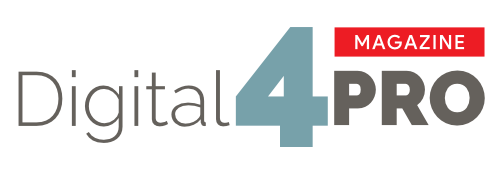- Mail:
- info@digital4pro.com
Search Engine for proposing your products or services on the web

Search Engine per la proposizione dei propri prodotti o servizi sul web
17 Giugno 2020
Sport: Arianna Colombari, Global Marketing services & Communication Manager Tecnica Group
18 Giugno 2020Search engines are the main gateway to all informations on the Internet. We all use search engines to find websites whose address, information, reviews, products we do not remember …
The Search Engine is the set of activities aimed at attracting as many users interested in the content offered by the search engines to their website as possible.
The Search Engine consists of two complementary activities:
- SEO (Search Engine Optimization);
- SEA (Search Engine Advertising).
The use of the Search Engine allows the advertiser to select a highly qualified traffic, as the ads are shown only to users who carry out searches strictly related to the products or services offered.
The best strategy is usually to resort to both methodologies in parallel, combining the benefits of SEO and SEA, working hand in hand with credibility and notoriety with an integrated strategy.
Search Engine Optimization (SEO)
Search Engine Optimization includes the set of optimization activities that can be performed on a website in order to position its pages in the first organic positions, therefore not paid, of the SERP1. The goal is to obtain qualified traffic to your site without, unlike what happens with the SEA, no cost is charged on user clicks.
SEO activities can be divided into two macro areas:
- On-site SEO: optimization of the contents of the pages so as to make them easily understandable by the crawlers2 of the search engines;
- Off-site SEO: optimization of websites and structuring of internal and external links, which increase the authority of sites in the eyes of search engines.
Even if search engine crawlers take a few weeks to read the pages on the web, the optimization activity, both on-site and off-site, certainly requires much more time to bring relevant results in terms of positioning in the SERPs. This is even more true if the Authority3 that the engines attribute to the domain is low.
The organic results are positioned below the sponsored results in the search engines. Therefore, to obtain a good organic positioning in relation to certain search queries, it is necessary to spend a lot of time and resources. Sponsored ads, on the other hand, allow you to gain great visibility in no time.
Search Engine Advertising (SEA)
With Search Engine Advertising we generally refer to the promotional activities of a website that search engines allow you to implement for a fee.
The SEA allows to indirectly acquire traffic from the search engines, behind the payment of an amount which is determined on the basis of an auction mechanism. Advertisers compete to get the best positions in search results (it is said that “the best place to hide a corpse is the second page of Google”) that ensure greater exposure of their ads to users who search and browse. The amount determined by the auction is charged every time a user clicks on the ad.
Search Engine Advertising is today the preferred way to obtain visibility on search engines. As Google saw 4.1 million searches per minute in 2020, it is clear that a Google Ads4 campaign can help get a website immediately reached by a large number of users.
The SEA strategy allows you to position your website among the first results in the search engines and satisfy the search intent5.
Diversifying the digital marketing strategy by investing in paid search advertising allows you to be among the sponsored results, therefore on top in the SERP, among the best positions. The latter mainly respond to the need to purchase, so it is important to invest in SEA activities to generate qualified traffic to your website and apply inbound marketing techniques6.
SEO or SEA?
An undisputed benefit of SEO is linked to the characteristic of working in the long term: it is possible to build the presence of the brand online over time and therefore give value and credibility to SERP.
Among the advantages of the SEA there is the possibility of competing with major brands in the same sector, obtaining more traffic to your page in less time, making your brand, product or service known, then making yourself known quickly and segmenting the audience by reach so that it is more targeted.
The clicks that are received through Search Engine Advertising activities have a price, called Cost per Click (CPC), while users who reach a website by clicking on an organic search result do not generate any cost to the webmaster, but this does not mean that it is a free result as the SEO activity requires time and expertise.
Unlike SEO, Search Engine Advertising instead allows to obtain traffic volumes in the short term, with more or less important results in proportion to the investments made.
Advertising and organic visibility are not in contrast as users prefer to turn to sponsored results or natural organic results as needed.
Usually we move towards a SEO approach on a few high traffic keywords, towards a SEA approach on a multitude of keywords with a lower traffic volume. It focuses on SEA in the short term and on SEO in the medium term.
One campaign for each channel
The search engines are different, as there are numerous applications designed for the creation and management of advertising campaigns on them.
In the construction of a SEA campaign, it is possible to operate mainly on three different types of campaigns and channels:
- Network Research campaigns: These are those commonly referred to when it comes to advertising on search engines. This type of campaign allows you to communicate with your target user while he is conducting a search and therefore expressing an actual question. The construction of these campaigns starts from the study of keywords. It is a matter of defining the audience by identifying what could be the search terms that users type to search for the products and services offered.
- Network Display campaigns: They allow you to reach the target user by posting text ads or banner ads on pages of other websites (for example affiliated with the Google Adsense circuit). The peculiarity of these campaigns lies in the possibility of selecting the end user on the basis of the interests they have expressed, the topics they are reading or their demographic characteristics. In this way it is possible to profile your audience in an advanced way by communicating only with users potentially interested in our proposal.
- Network Video Campaigns: They allow you to communicate through video ads on the Youtube network and Google partner sites, selecting the relevant audience as for the Display Network.
The use of the three channels allows you to communicate with your target users at different times of their navigation.
At a situation in which the online economy has seen exponential growth, it is unthinkable to tackle the web without the preparation and the professional support needed. Evolving towards proposing your products or services on the web certainly opens up new markets, but it is certainly a very complex process.
1 Search Engine Results Page (SERP) means “search engine results page”.
2 A Web crawler, sometimes called a spider or spiderbot and often abbreviated as a crawler, is an Internet bot that systematically surfs the World Wide Web, typically for the purpose of indexing the Web.
3 The domain authority is a search engine ranking score which provides for the ability of a website to position itself on the search engine results pages or SERP. Domain authority ranges from 1 to 100.
4 Google Ads is an online advertising platform developed by Google, in which advertisers pay to show web users short advertisements, service offers, product lists, video content and generate installations of mobile applications within the Google advertising network.
5 The Search Intent is the meaning that is attributed by search engines to the keywords used by users to obtain information or buy products. The result of this meaning is represented by the SERP, which however also takes into account the geolocation of the search. Search intentions are classified into Information Intent, Transactional Intent, Navigational Intent, Commercial Investigation Intent, Local Intent and Free Intent.
6 In inbound marketing, the strategy is not that of a direct proposal, but one through which the trust of the person who has a need is acquired, whether latent or tangible, and goes to the search engine to find a solution. Once the user is attracted thanks to the good content that answers his questions, he will leave us his contact to get other interesting information. At this point it will be necessary to act at the right time to arrive at conversion.




